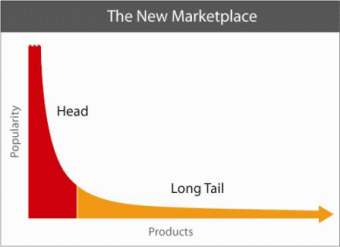59 Top Physician Blogs Worth Reading
 While the majority of physicians haven't exactly embraced the rise of social media, here are some of the physician thought leaders who have.
While the majority of physicians haven't exactly embraced the rise of social media, here are some of the physician thought leaders who have.
The following blogs are not listed in any order but randomly placed in a general category. We've intentionally not linked to any blogs that have no recent posts and aren't currently active. If there's a blog that should be included in this list, please list it in the comments of this post.
Note: If you're looking for the blogs of our contributing authors, you can find links to them all next to their contributing authors bios.
Medicine & Specialties
These doctors write about outside interests, but their individual specialties tend to be their blogs focus.
- ExpedMed: On Wilderness Medicine if you're in to adventuresome CME.
- Uncommon Student MD: Student doctors in medical school and residency.
- Doctor Anonymous: Passionate about medicine and social media.
- Dr Helen: A forensic psychologist commenting on popular culture, politics and psychological issues.
- A Life In The Day Of A Basics Doc: This roadside doctor handles trauma and writes about his experiences. Sobering and riveting.
- Dr. Grumpy: This docs sick of patient shenanigans, the stupidity of insurance companies, and the daily insanity.
- Movin' Meat: This Pacific Northwest physician posts stories of ER drama and healthcare reform issues will make you think.
- Doc Gurley: A board-certified Internist physician and the only Harvard Medical School graduate to have been awarded a Shoney’s Ten-Step Pin for documented excellence in waitressing.
- A Life In The Day Of A Basics Doc: A a blow-by-blow account of accident scenes, including shattered glass and drunk drivers.
- MDOD: A collective of physicians from diverse specialties, all writing under pseudonyms, this blog shares case studies and humorous stories from work.
- 33 Charts: Bryan Vartabedian, M.D. blog focused on pediatric health and social media
- High Tech Surgeon: If you’re curious about the latest technology or the possibility of surgery performed by a robot, this blog is for you. Written by a general surgeon grounded in the practical applications of these innovations.
- Clinical Correlations: NYU Department of Medicine educational site inspiring both new and seasoned physicians alike that internal medicine is much more than a job.
- Cacoethes Cognitum: Group site who make a pastime of turning medical cases and discussions into medically irrelevant history lessons, philosophical rants, and displays of one-upsmanship.
- At Your Cervix: (Best Name) RN blog about your cervix and stuff.
- Respectful Insolence: A pseudonymous surgeon/scientist concerning medicine and quackery, science and pseudoscience, history and pseudohistory.
- Mothers In Medicine: A group blog by physician-mothers, writing about the unique challenges and joys of tending to two distinct patient populations, both of whom can be quite demanding.
- Bioethics Discussion Blog: Once a week or so, Dr. Bernstein offers a blog entry of varying interests, always in the world of bioethics.
- Docnotes: Health, technology, family medicine and other observations.
- The Dermatology Blog: All about skin care written by a dermatologist.
- Buckeye Surgeon: Ruminations by a non-academic general surgeon from the heart of the rust belt.
- Clinical Cases and Images: CasesBlog: This blog offers health news, updated daily, by a former Cleveland Clinic assistant professor of medicine.
- Doctor David’s Blog: Follow the musings of a pediatric oncologist.
- Dr. Deb: This lady is all business. She’s a psychologist specializing in trauma and depression and uses her blog for educating the public.
- Dr. Len’s Cancer Blog: Dr. Lichtenfeld is Deputy Chief Medical Officer for the national office of the American Cancer Society.
- Gruntdoc: A highly popular blog written by a doctor who once served in the U.S. Navy.
- RangelMD: Learn more about sickness with a dash of cynicism from this highly popular doctor’s blog.
- Aggravated Doc Surg: Takes on massive chunks of history to explain how the medical system ended up in such a mess. Posts are detailed and well-researched, but it’s the punchy writing that keeps you engaged.
- Retired Doc’s Thoughts: Although some entries focus on health care debates, the focus here is on internal medicine, endurance training, exercise and gerontology.
- Suture for a Living: Although this plastic surgeon is into ‘stitches’ in quilts as well as on bodies, the focus is more on medicine and health than on sewing.
- California Medicine Man: Medical issues in the news. California Medicine Man is a physician and assistant professor at UCLA.
- The Underwear Drawer: This is a personal online journals os an anesthesiology resident in Atlanta and “what happens next.”
- A Chance To Cut Is A Chance To Cure: Analysis on issues relevant to surgeons, from insurance to policy.
Healthcare & Medical Issues
These blogs are focused on healthcare, managment and how it all works (or doesn't).
- Life As A Healtcare CIO: Life in the world of healthcare IT, supporting 3000 doctors, 18000 faculty, and 3 million patients
- MD Whistleblower: When not performing colonoscopies, this physician is tacking big issues in the medical field through his blog. His passion for high-quality medicine is evident in the consideration with which he composes each post.
- Not Running A Hospital: Advocate for patient-centered care, eliminating preventable harm, transparency of clinical outcomes, and front-line driven process improvement.
- DB's Medical Rants: Will Pay for Performance improve medical care? Do physicians need to be trained in emotional intelligence? An educated opinion formed by years of hands-on experience.
- Health Care Reform In America: Dr. Kenneth Fisher on problems that make health care so outrageously expensive.
- Bad Science: Dr. Goldacre is an award-winning broadcaster and medical doctor who specializes in tearing apart dodgy scientific claims made by “scaremongerers.”
- Doctor & Patient: An IVF specialist who believes in information therapy and runs the world's largest free patient education library.
- Fixin’ Healthcare: Dr. Newberry is a physician, former Dean of College of Medicine and Academic VP & Provost at MUSC in Charleston, SC (retired) and currently at Nutritional Health Centers in Greenville & Spartanburg, SC.
- Health Care Renewal: A variety of doctors contribute to this blog, which is focused on health care renewal.
- KevinMD.com: Join the hippest, most happening doctor on the Internet today as he tackles health care issues from the lens of a primary care provider.
- Medical Humanities: This blog, written by a slew of medical personnel, focuses on the intersection between medicine and the arts.
- DB’s Medical Rants: Dr. Centor contemplates medicine and the health care system in this interesting blog.
- MD Whistleblower: Get it while it’s hot! Dr. Kirsch enjoys writing about controversies in the doctor-patient relationship. When he’s not writing, he’s “performing colonoscopies.”
- Notes from Dr. RW: Learn about strange happenings in the medical world, including the interface between medicine and politics, from this blog.
- The Covert Rationing Blog: Learn about healthcare rationing in America from Dr. Rich, a former professor of medicine.
- Wachter’s World: Dr. Wachter is MD is Professor and Associate Chairman of the Department of Medicine at the University of California, San Francisco. He also writes this highly popular blog for and about doctors and their environments.
Physician blogs around the world
Docs blog everywhere. Here are some great blogs from down under, across the pond, and elswhere.
- Angry Doc: Angry Doc is anonymous, but he is located in Singapore, and his interests and opinions have garnered a large following over the years.
- Practice What I Preach: Thoughts on writing and parenting from a child psychiatrist and writer.
- Bad Medicine: This UK blog focuses on…yep, bad medicine; but, in a totally engaging way.
- Bagga’s Blog: Dr. Paul Baggaley is a Christian family doctor from Perth, Australia with an interest in obstetrics and pediatrics.
- Doctor Bloggs…The official online diary of Nasty Gnome Party: A highly political medical blog colored by a great British humor lens and focused on the British National Health Service (NHS).
- National Death Service: UK NHS horror stories drip from this “gotta watch this train wreck” blog.
- Nip/Fuct: ‘Dr. Vegas,’ located in the UK, tags himself as a “greedy doctor looking for job satisfaction.”
- The Jobbing Doctor: Follow this UK general practitioner who works in a “large industrialized conurbation outside of London.”
- The Junior Doctor: This junior doc is training somewhere in the UK and “loving it.”
Ok... Some nonclinical physician blogs too.
Although these physicians are practicing clinical medicine, their outside interests seem to take front stage on their blogs.
- Freelance MD: Only the most awesome physician lifestyle community on the web.
- Zdogg MD: Slightly Funnier Than Placebo - Zdogg's a hospital physician and purveyor of fine medical satire.
- In My Humble Opinion: This blog is deeply personal. A primary care physician who shares what’s in his heart regarding medical reform and the future of the profession.
- Academic Life in Emergency Medicine: Emergency medicine doc at SFGH with an academic niche posting on technology and how it can transform the landscape of medical education.
- The Doc's Almost Wife: A nursing student, engaged to an orthopedic surgery resident. Posts discuss illusive life balance, meeting prospective office partners, and miscellany.
- The Heart Is A Lonely Hunter: Tales From the training of a physician.
- Musings of a Dinosaur: if you want great writing and humor that makes you snort your coffee up your nose, this is the blog for you.
- Notes of an Anesthesioboist: Combine a specialist with an oboe and this is what you get.
- Suture For A Living: A plastic surgeon in Little Rock writing about medicine and surgery as well as sewing and quilting.
- The Blog that Ate Manhattan: A "Gyno-Food Blog" which focuses on both.
- The Doctor Is In: Dr. Bob is a Christian doctor who has a very popular blog.
- Physician Law: Regulatory and transactional health care attorney blogs legal.
- Medical Spa MD: Physicians in non-surgical cosmetic medicine.
Ok, if you're a math guru you can see that there's more than 59 blogs here, but round numbers always smack of contrivance and we hate that.
Think there's a physician blog that should be included in this list? Please add it as a comment. (Blogs that fit in this list only please.)
 Email This Article tagged:
Email This Article tagged:  Clinical Medicine,
Clinical Medicine,  Medical Blogs,
Medical Blogs,  Physician Blogs,
Physician Blogs,  Social Networking |
Social Networking |  Mar 19, 7:00 AM
Mar 19, 7:00 AM 









